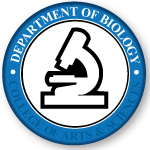Antiretroviral Pre-exposure Prophylaxis Prevents Vaginal Transmission of HIV-1 in Humanized BLT Mice
Author ORCID Identifier
Document Type
Article
Publication Date
1-15-2008
Publication Title
PLOS Medicine
Volume
5
Issue
1
Abstract
Background: Worldwide, vaginal transmission now accounts for more than half of newly acquired HIV-1 infections. Despite the urgency to develop and implement novel approaches capable of preventing HIV transmission, this process has been hindered by the lack of adequate small animal models for preclinical efficacy and safety testing. Given the importance of this route of transmission, we investigated the susceptibility of humanized mice to intravaginal HIV-1 infection.
Methods and Findings: We show that the female reproductive tract of humanized bone marrow–liver–thymus (BLT) mice is reconstituted with human CD4þ T and other relevant human cells, rendering these humanized mice susceptible to intravaginal infection by HIV-1. Effects of HIV-1 infection include CD4þ T cell depletion in gut-associated lymphoid tissue (GALT) that closely mimics what is observed in HIV-1–infected humans. We also show that pre-exposure prophylaxis with antiretroviral drugs is a highly effective method for preventing vaginal HIV-1 transmission. Whereas 88% (7/8) of BLT mice inoculated vaginally with HIV-1 became infected, none of the animals (0/5) given pre-exposure prophylaxis of emtricitabine (FTC)/tenofovir disoproxil fumarate (TDF) showed evidence of infection (Chi square ¼ 7.5, df ¼ 1, p ¼ 0.006).
Conclusions: The fact that humanized BLT mice are susceptible to intravaginal infection makes this system an excellent candidate for preclinical evaluation of both microbicides and pre-exposure prophylactic regimens. The utility of humanized mice to study intravaginal HIV-1 transmission is particularly highlighted by the demonstration that pre-exposure prophylaxis can prevent intravaginal HIV-1 transmission in the BLT mouse model.
Recommended Citation
Denton, Paul W.; Estes, Jacob D.; Sun, Zhifeng; Othieno, Florence A.; Wei, Bangdong L.; Wege, Anja K.; Powell, Daniel A.; Payne, Deborah A.; Haase, Ashley T.; and Garcia, J. Victor, "Antiretroviral Pre-exposure Prophylaxis Prevents Vaginal Transmission of HIV-1 in Humanized BLT Mice" (2008). Biology Faculty Publications. 148.
https://digitalcommons.unomaha.edu/biofacpub/148


Comments
© 2008 Denton et al. This is an open-access article distributed under the terms of the Creative Commons Attribution License, which permits unrestricted use, distribution, and reproduction in any medium, provided the original author and source are credited.